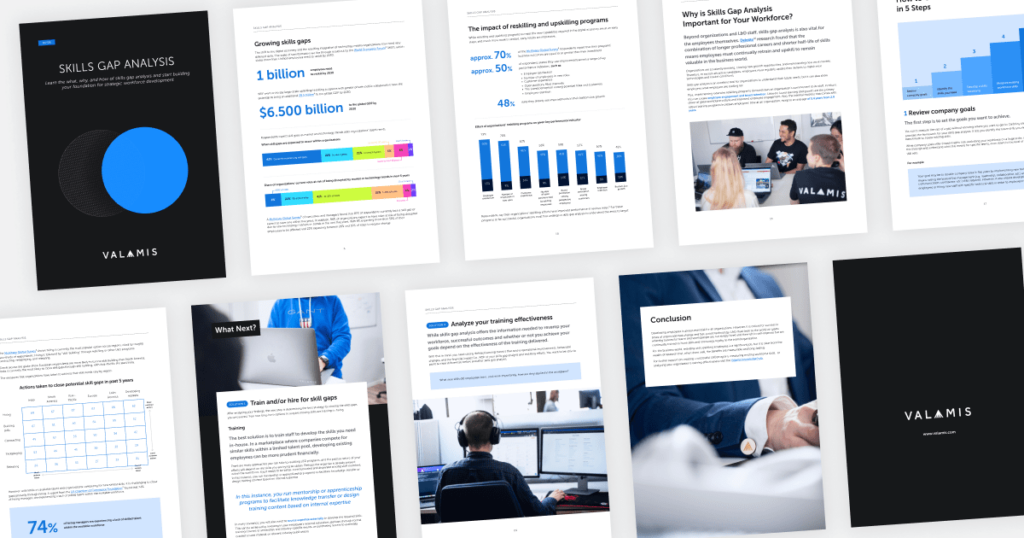Skills gap analysis guide
Find the gaps in your team’s skills and create a plan to close them. Our guide helps you assess current capabilities and prepare for future needs.

About this guide
In an era where digital skills are indispensable, every new hire and current employee must be fully equipped to meet these demands.
Whether you’re onboarding new talent or enhancing your team’s skills, our comprehensive guide is your essential resource.
This digital guide helps you understand and implement a skills gap analysis in your organization. Follow our step-by-step process and discover your next steps to effectively address and bridge skills gaps in your organization.
Download the guide to learn:
- Why and when you should conduct a skills gap analysis
- How to conduct a skills gap analysis in 5 steps
- What your next steps should be after the analysis
- How skills gap analysis can help L&D professionals
- How skills gap analysis can help your business
- Latest statistics on the skills gap in different industries
Download now and we’ll send the guide straight to your inbox!
Discover:
- Practical insights on why conducting a skills gap analysis is vital for learning & development professionals and your workforce at large.
- Step-by-step instructions on how to effectively perform a skills gap analysis.

